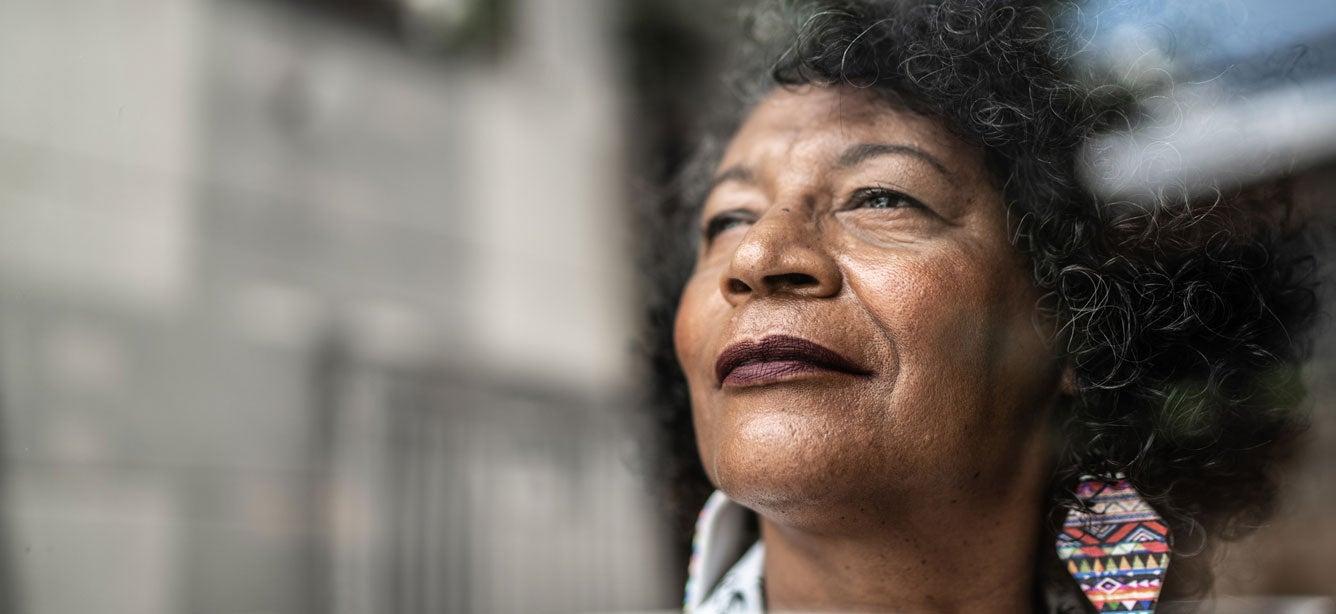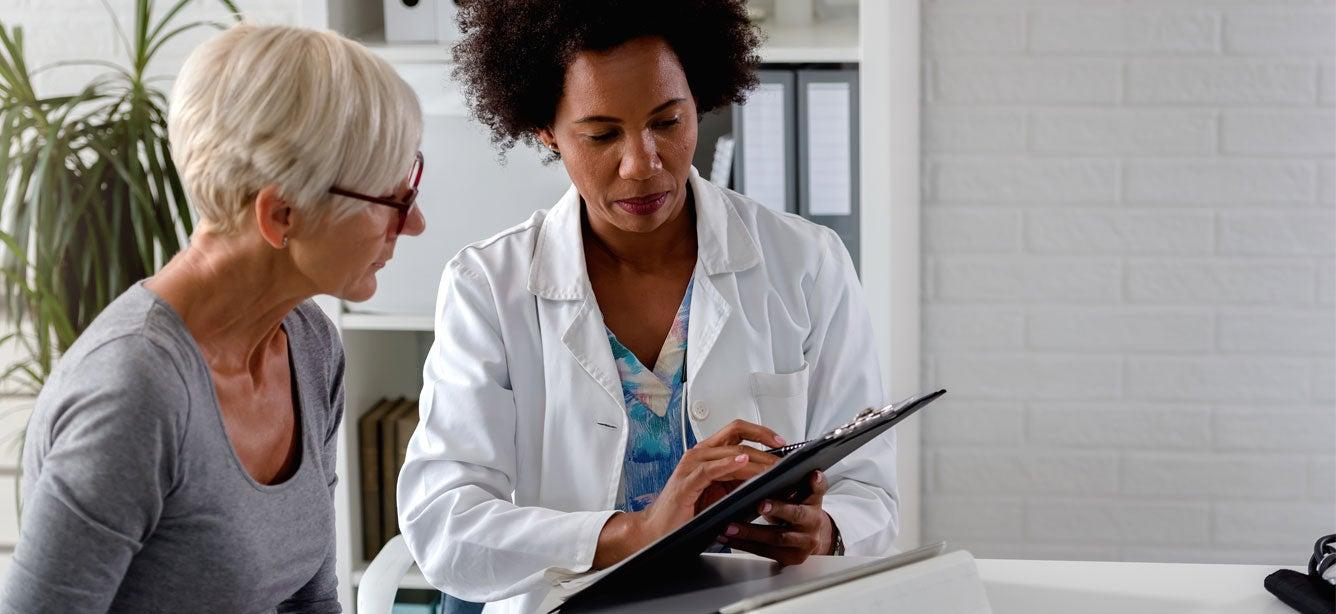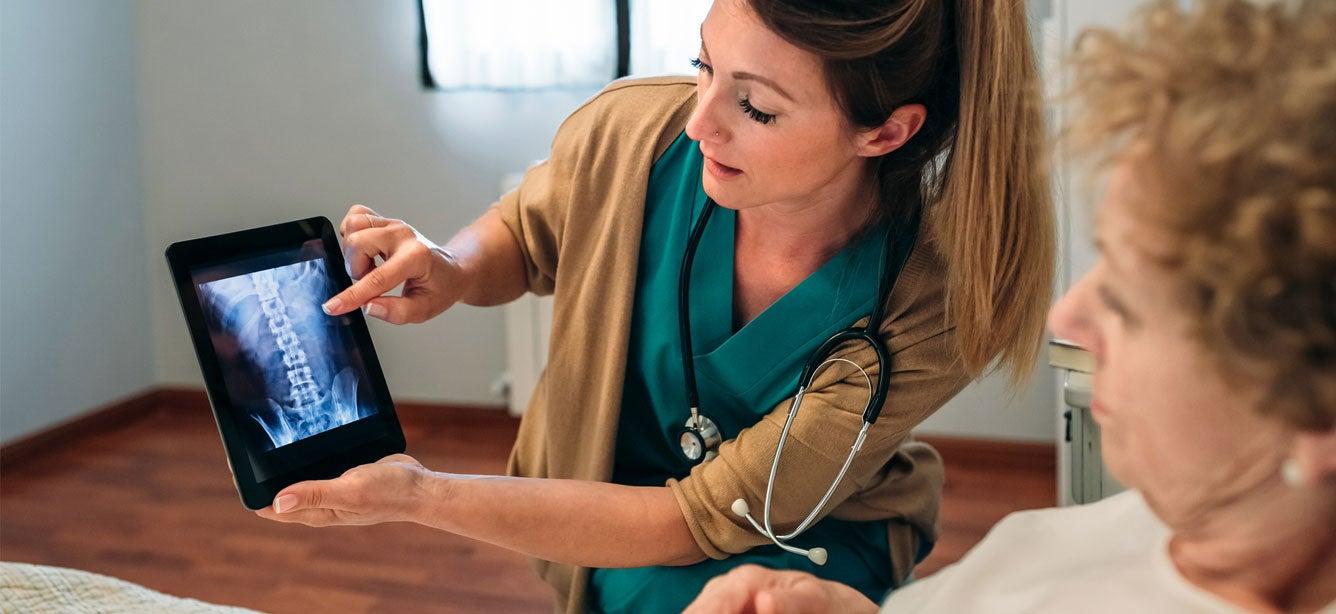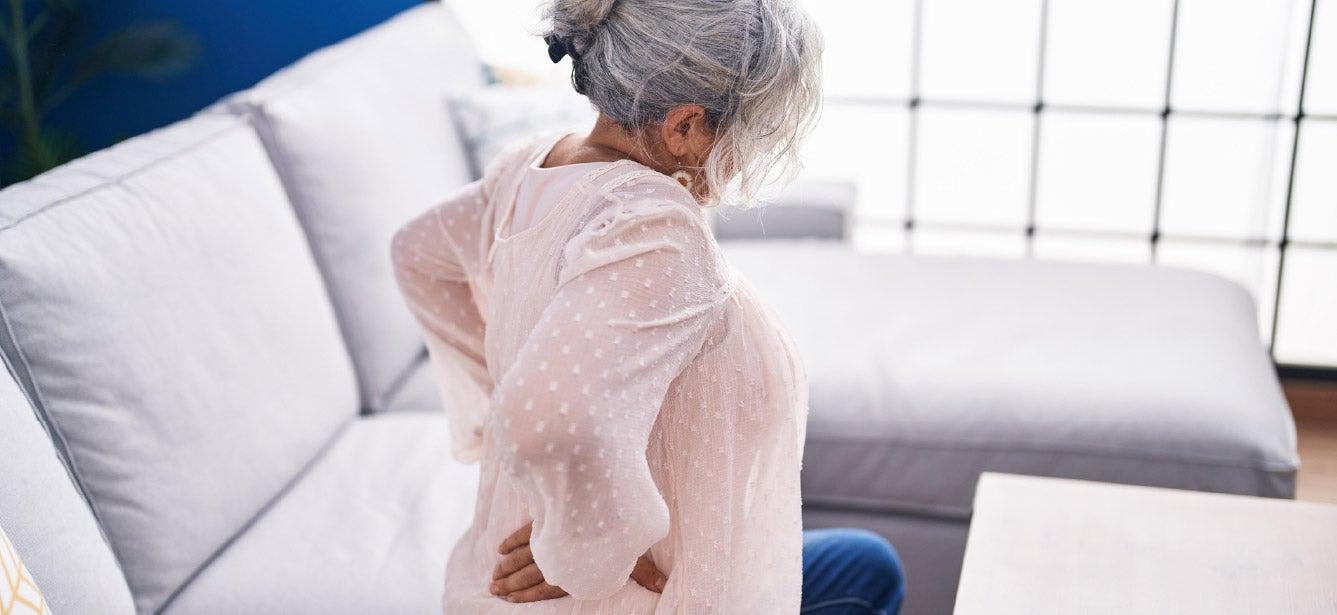
Related Topics
Having strong, healthy bones is important at any age. But as we grow older, the health of our bones requires more attention. This is because our bodies begin to absorb calcium and phosphate from our bones over time, making them weaker and more porous. Bone loss affects postmenopausal women in particular and can lead to osteoporosis.
There’s a common belief that osteoporosis only affects white women. However, this is a dangerous misperception that can prevent older Black women from getting the information, screening, and treatment they need to prevent and manage this debilitating condition.
What is osteoporosis?
Osteoporosis is a bone disease in which bones lose their density, becoming thinner and weaker and more prone to breaking. This condition can cause pain and disability and make it challenging to perform everyday activities. Osteoporosis shouldn’t be confused with osteoarthritis, a degenerative joint disease characterized by pain and inflammation.
Osteoporosis is often a “silent” disease that produces no symptoms. It may progress for many years undetected, until a broken bone, or fracture occurs. These fractures can compromise an individual’s ability to walk, cause deformities and loss of height, and dramatically lower quality of life.
Osteoporosis may even indirectly lead to death, since fractures and related complications can cause an older person’s health to quickly deteriorate.
What are the risk factors for fractures due to osteoporosis?
Risk factors for osteoporotic fractures include:
- Advanced age
- Thinness (body mass index less than 18.5 kg/m2)
- Prior fracture after the age of 50 in men and women
- Low bone density
- Family history of osteoporotic fractures
- Race (more common in non-Hispanic white and Asian women; African American and Hispanic women have lower risk of developing osteoporosis, but they are still at significant risk)1
- Use of medication harmful to bone
- Rheumatoid arthritis
- Diabetes
- Current smoking
- Excess alcohol (more than two daily drinks for men or more than one daily drink for women)
- Inadequate exposure to sunlight
- Low physical activity
Breaking a bone as an older adult is another osteoporosis risk factor. In a 2021 study, postmenopausal women who sustained an initial fracture from minimal trauma—a sign of weakened bones—were 52% more likely to suffer another fracture compared to women with no initial fracture.
How does osteoporosis affect Black women?
Black women tend to have higher bone mineral density throughout their life and a lower prevalence of osteoporosis overall. However, they face health disparities and other issues that put them at high risk for developing and suffering complications from this disease:
- Compared to white women, Black women with postmenopausal osteoporosis experience worse outcomes after sustaining hip and several other types of fractures.
- Black women are more likely to have lupus or sickle cell anemia, both linked with a higher osteoporosis risk.
- The Black community is 8-10% less likely to get screened for osteoporosis depending on age, and therefore more likely to go undiagnosed.
- Up to 75% of Black Americans are lactose-intolerant. This can prevent them from consuming dairy products—an excellent source of bone-strengthening calcium and Vitamin D. In fact, Black women's calcium intake is 50% less than the Recommended Dietary Allowance.
- Black women are less likely to receive medication to treat osteoporosis and prevent fractures.
- In one study, Black patients were at greater risk for delayed surgery following a hip fracture.
- In another study, Black patients had 30% higher odds of not receiving physical therapy following a hip fracture.
Women in the Black community also tend to have less awareness about osteoporosis than white women, which can delay prevention and treatment.
How can Black women be proactive about maintaining bone health?
It’s never too late to start taking care of your bones. Here are some smart habits you can adopt to improve your bone health:
1. Eat a balanced diet: One of the primary ways to build bones and reduce osteoporosis risk is to eat a varied, nourishing diet that's rich in calcium and Vitamin D. The Bone Health & Osteoporosis Foundationrecommends that women age 51 and older get 1,200mg of calcium daily, while most adults age 50 and older need 800-1,000 IU daily of Vitamin D. If you’re not getting a sufficient amount of these nutrients from food or diet alone, you may need to support your diet by taking a multivitamin or supplements.
- Dairy products like milk, yogurt, and cheese are excellent sources of calcium. If you can't tolerate dairy products, you can still get calcium from certain types of fish (sardines or canned salmon), almonds, lima and kidney beans, and certain dark leafy greens such as cooked spinach, kale, and collard greens. Calcium-fortified foods (e.g., orange juice) are another option.
- Dietary sources of Vitamin D include egg yolks, fatty fish, and beef liver. You can also get it through over-the-counter supplements and by spending time in the sun.
- A growing body of scientific evidence has shown that Vitamin K plays an important role in proteins involved in bone formation such as osteocalcin. Some studies have linked higher vitamin K intakes with greater bone mineral density and/or lower incidence of hip fractures. Good sources of vitamin K include green leafy vegetables, some fruits (especially prunes and kiwi) and vegetable oils.2 Natto (a traditional Japanese food made from fermented soybeans) is a rich in Vitamin K (261% of the Daily Value per serving)3
2. Make exercise part of your daily routine. Exercising regularly can help boost your muscle strength, improve your balance and posture, and relieve pain. It can also lower your risk of falls and fractures. Focus on weight-bearing activities such as walking, jogging, dancing, and weight training. If you have osteoporosis or a condition that affects your ability to exercise, check with your doctor before beginning an exercise regimen.
3. Get a bone density test. A bone density test is a fast, painless, and inexpensive way to determine your risk for fractures due to osteoporosis. It's performed using a DXA scan, which stands for dual energy x-ray absorptiometry. The DXA scan uses low levels of x-rays to measure the mineral content of your bones.
The Bone Health & Osteoporosis Foundation (BHOF) recommends a bone density test of the hip and spine for women who:
- Are age 65 or older
- Are of menopausal age with osteoporosis risk factors
- Are postmenopausal under age 65 with risk factors
A bone density test is also advised if you break a bone after the age of 50 following a minor fall or injury.
4. Take medication for osteoporosis. If your DXA scan shows osteoporosis—or if you had a fracture after age 50 or have a high risk for breaking a bone—you may be prescribed medication to strengthen your bones along with counseling on diet and exercise. There are safe and effective drugs available that are approved for osteoporosis prevention and treatment.
Make a personal plan of action to prevent osteoporosis
For older Black women, the first step in preventing osteoporosis is education. Arm yourself with information about osteoporosis in the Black community, and then be your own bone health advocate. You can take action by:
- Learning your risk factors. Do you have diabetes? Did your mother break her hip? American Bone Health offers a calculator to help you determine your personal risk. Ask your doctor how these risk factors, along with any medications you’re taking, can affect your bone health.
- Requesting a DXA scan. Should your risk factors warrant it, ask your provider to order a bone density test for you. In most cases, this test is covered under Medicare Part B once every 24 months.
- Doing what you can to prevent falls. One-quarter of Americans aged 65 and older fall each year—but it's not a normal part of aging. Learn what you can do to keep yourself safe and avoid fractures. Our Falls Prevention for Older Adults resource hub is a great place to start.
There is no cure for osteoporosis. However, prevention and treatment can help you stop further bone loss, reduce your risk of fractures, and keep living your best life possible.
Sources
1. National Institute of Arthritis and Musculoskeletal and Skin Diseases (NIAMS). Osteoporosis. Found on the internet at https://www.niams.nih.gov/health-topics/osteoporosis
2. Office of Dietary Supplements, National Institutes of Health. Vitamin K: Fact Sheet for Health Professionals. Found on the internet at https://ods.od.nih.gov/factsheets/VitaminK-HealthProfessional/
3. Healthline. 20 Foods that are High in Vitamin K. Found on the internet at https://www.healthline.com/nutrition/foods-high-in-vitamin-k




